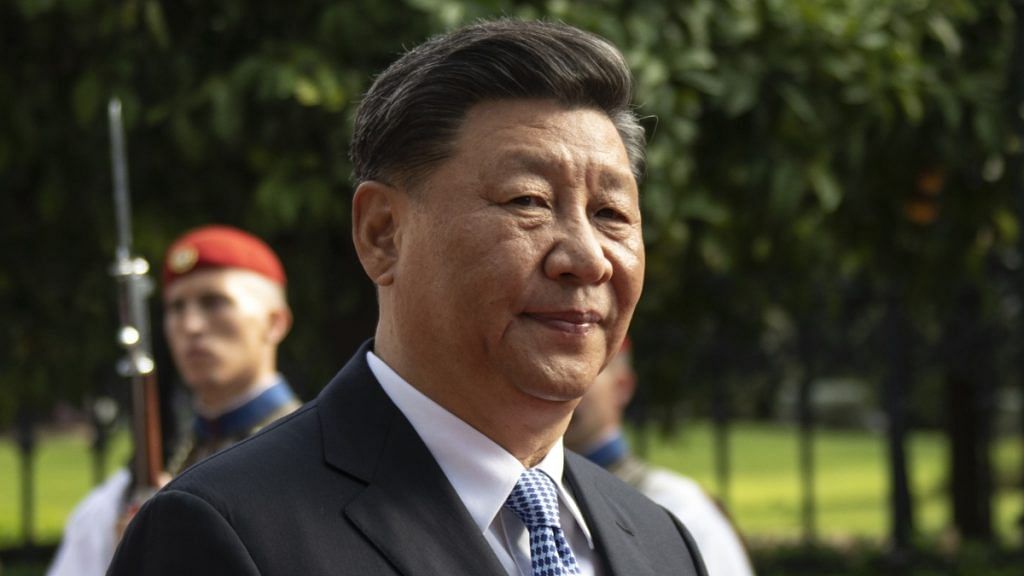New Delhi: The changes made by the Narendra Modi government in Kashmir in 2019 and the claim that India was going to “grab” Aksai Chin may have been the reason behind the Chinese reaction in Ladakh, said ThePrint’s Editor-in-Chief Shekhar Gupta in episode 574 of ‘Cut The Clutter’.
In the episode, Gupta decoded the motivations behind China’s war-games and dissected the new details that have emerged on the Chinese military build-up along the Line of Actual Control (LAC), and how this could be Beijing’s efforts in carrying out psychological warfare.
Citing a report by US-based think tank Stratfor, Gupta noted that the Chinese, since 2017, have been upgrading their military infrastructure along the entire LAC and not just Ladakh.
“This report says that the Chinese probably became hyperactive since the Doklam standoff, even though it happened in 2017.”
New Delhi and Beijing were locked in an over-two-month standoff in 2017 in the China, Bhutan and India tri-junction at Doklam.
Also read: India, China say won’t send more troops to Ladakh frontlines, agree to avoid misunderstandings
Chinese military build-up along LAC
In the past few years, China has focused on improving its logistics along the LAC.
Their investments are also exaggeratedly inclined towards enhancing air power. This was done in two ways — they built three new air bases and improved all existing air bases by hardening shelters and making space for more top-of-the-line aircraft.
According to Gupta, this is because “it has been believed for a long time and quite rightly, that when it comes to the Tibetan frontier, India has an advantage in the air”.
“Most of the Chinese air basis are on the Tibetan plateau or Aksai Chin and are quite high already. At that altitude, a high performance aircraft cannot take off and land with their full complement of weaponry. So, there is a warlord penalty for operating those altitudes. Whereas all the Indian airbases are in the plains,” he added.
All this infrastructure is being placed because China cannot afford many soldier casualties, argued Gupta. He explained that when a nation moves up on the value chain in terms of per capita income, its ability to accept casualties becomes less.
“As a country becomes richer, its ability to take casualties becomes less and China has the additional problem of two generations of single child families,” he explained. Therefore, the Indian approach now is inclined to be that the Chinese can be tied down in a war of attrition, which can cost them casualties.
While this is a sound strategy, Gupta cited Lt. Gen. H.S. Panag who argued that “close combat on the ground is now passé. It is the twentieth century and the Chinese would like to fight on other planes”.
Gupta explained that these Chinese air defence systems are directed towards “denying India space within its own airspace”.
Also read: 5 maps that tell you all you want to know about India vs China in Ladakh
What could be China’s motivations
“I am guessing the Chinese motives behind heavy investments in air assets, air defence, helicopters and drones could also be psychological warfare,” Gupta noted.
“This is also the Chinese approach now because they are looking at a situation where they can achieve some kind of an objective without suffering casualties.”
Something to look out for is the plenary of the Chinese Community Party in mid-October where President Xi Jinping has to speak, said Gupta. “We will have to guess whether he wants to speak there as somebody who’s settled with India and withdrew forces and de-escalated, or he wants to be there as someone who is claiming that he put India in its place.”
In order to understand the motivations behind Chinese approach, Gupta warned that one must acknowledge that the Chinese are not “irrational”.
“One thing we have seen is that the Chinese don’t want to combat on ground and want to fight in another dimension. Number two is that the Chinese were not surprised by the Indian response,” he said.
They knew how India would react, especially after Doklam, which isn’t even in Indian territory.
“The Chinese could also be raising the costs of status quo for India. If India wants it borders as they are amid a standoff, they will have to spend money on more equipment, buy more supplies, order more Rafales (fighters). It will upset the defence budget,” he said.
“It will also make you shift emphasis from your Navy to the Army and divide your forces on a permanent basis between Pakistan and China frontier. So LAC could become the new LoC (Line of Control),” Gupta added.
China could also have been upset by the events of 5 August 2019 in Kashmir and India’s “activism” in Doklam. So, maybe China could be joining hands with Pakistan in one theatre where they can collude and push India into some resolution on Kashmir that India can’t sustain.
“Another possibility could be to keep India stretched everywhere from Arunachal Pradesh, Sikkim, Himachal Pradesh to Uttarakhand. They could stretch India out, which means really maximise the costs of maintaining the status quo on the borders,” Gupta noted.
The Chinese motivations behind raising the status quo for India could be that President Xi Jinping actually wants a border settlement.
Gupta explained, “Maybe Jinping actually wants a border settlement. And he’s probably saying, look you got used to the status quo for 60 years. I don’t think it’s workable. Let us get together, take a package deal and sort it out.”
But at the same time, Jinping wants to come from a position of strength.
